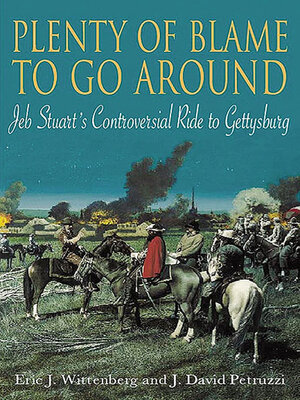Plenty of Blame to go Around
ebook ∣ Jeb Stuart's Controversial Ride to Gettysburg
By Eric J. Wittenberg

Sign up to save your library
With an OverDrive account, you can save your favorite libraries for at-a-glance information about availability. Find out more about OverDrive accounts.
Find this title in Libby, the library reading app by OverDrive.



Search for a digital library with this title
Title found at these libraries:
| Library Name | Distance |
|---|---|
| Loading... |
"A welcome new account of Stuart's fateful ride during the 1863 Pennsylvania campaign . . . well researched, vividly written, and shrewdly argued." —Mark Grimsley, author of And Keep Moving On June 1863. The Gettysburg Campaign is in its opening hours. Harness jingles and hoofs pound as Confederate cavalryman James Ewell Brown (JEB) Stuart leads his three brigades of veteran troopers on a ride that triggers one of the Civil War's most bitter and enduring controversies. Instead of finding glory and victory-two objectives with which he was intimately familiar, Stuart reaped stinging criticism and substantial blame for one of the Confederacy's most stunning and unexpected battlefield defeats. In Plenty of Blame to Go Around: Jeb Stuart's Controversial Ride to Gettysburg, Eric J. Wittenberg and J. David Petruzzi objectively investigate the role Stuart's horsemen played in the disastrous campaign. It is the first book ever written on this important and endlessly fascinating subject. Did the plumed cavalier disobey General Robert E. Lee's orders by stripping the army of its "eyes and ears?" Was Stuart to blame for the unexpected combat that broke out at Gettysburg on July 1? Authors Wittenberg and Petruzzi, widely recognized for their study and expertise of Civil War cavalry operations, have drawn upon a massive array of primary sources, many heretofore untapped, to fully explore Stuart's ride, its consequences, and the intense debate among participants shortly after the battle, through early post-war commentators, and among modern scholars. The result is a richly detailed study jammed with incisive tactical commentary, new perspectives on the strategic role of the Southern cavalry, and fresh insights on every horse engagement, large and small, fought during the campaign.







